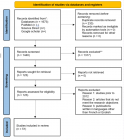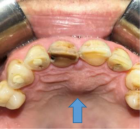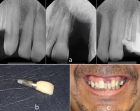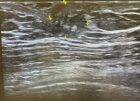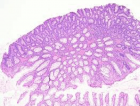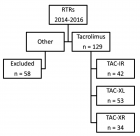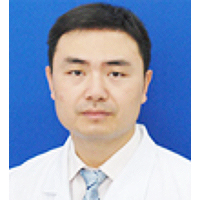About University of Naples Federico II
University of Naples Federico II
Articles by University of Naples Federico II
Benign Paroxysmal Positional Vertigo (BPPV) and microvasculitis: A comparative study between nasal cytology and pathology
Published on: 24th February, 2020
OCLC Number/Unique Identifier: 8540540513
Purpose: Benign paroxysmal positional vertigo (BPPV) is the most frequent peripheral vertigo syndrome in otoneurological clinical practice and is characterized by short and paroxysmal objective vertigo crises caused by changes in the position of the head on specific planes of space. Secondary microvasculitis is characterized by inflammatory destruction of the small vessels. Starting from this point, this work is based on the research of correlation between microvasculitis (especially secondary), recurrent BPPV and nasal cytology, an aspect, among other things, poorly documented.
Materials and methods: To evaluate the relationships between recurrent BPPV and secondary microvasculitis, nine patients with this disorder, 5 males and 4 females aged between 25 and 40 years were observed (average age 30.6). Non allergic pains in the small joints and in the anamnesis nothing relevant in the gentiles and collaterals: Evaluated with vestibular audiometric examination, nasal cytology and vascular examination with corneal HRT results. Nasal cytology, in all cases, has documented the presence of rare mast cells. The hemodynamics of the microcirculation with a confocal microscope has revealed blood flow alteration in all subjects.
Discussion: Analyzing the results, both the prevalence of the right side and a close relationship between vasculitis and BPPV could be seen.
Conclusion: The study of the nasal mucosa and the research of inflammatory cells could be fundamental for the study of BPPV in which as we have seen the important biochemical role for the onset of these diseases.
Using correlative microscopy for studying and treatment of Mycoplasma infections of the ophtalmic mucosa
Published on: 12th March, 2020
OCLC Number/Unique Identifier: 8553865045
Purpose: We have studied in 18-month 21 patients showing kerato-conjunctivitis and/or dermato-blefaritis, where we will find a constant presence of mycoplasma in SEM optical cytology samples. The 21 patients were divided as follows: 7 allergic, 7 alleged allergic and 7 not-allergic, this division it makes between a clinical approach considering clinical history and symptoms. At the first examination, 16 of the 21 patients had a single or multiple infection in which the main pathogenic element was found to be Mycoplasma; the remaining 7, 4 of them were suspected allergic patients, 2 of it, were allergic subjects with the presence of eosinophils or mast cells.
Material and methods: All the study is constructed on citological optical microscopy and citological electron scanning microscopy (SEM) images for demonstrate the efficacy of the SEM in clinical approach at allergic, not allergic and suspected allergic patients.
Therapeutic treatment and Results: Treatment of the allergic and false allergic patients has made with local somministration of galenic composition with ialuronic acid 3 ml and Tetracycline hydrochloride 30 mg and with low level of cortisone and antisthaminic therapy. This treatment is necessary to eradicate the Mycoplasma infection and counteract toxic action of this pathogen on mucosa.
Discussion: After appropriate therapy we note that allergic patients have a greater predisposition to redundancy in infections in the short period (minimum 20 days), while alleged allergic patients have more prolonged infection periods (between 3 and 5 months), with constant presence at low levels of persistent Mycoplasma. The latter continue to show signs and symptoms similar to allergic patients, but with a negative test for tear IgE and absence of eosinophils and/or mast cells, in the optical and SEM samples displayed.
Scraping cytology and scanning electron microscopy in diagnosis and therapy of corneal ulcer by mycobacterium infection
Published on: 6th December, 2019
OCLC Number/Unique Identifier: 8440619538
Purpose: This work is aimed at demonstrating that scraping cytology and scanning electron microscopy can successfully assist in the diagnosis of nontuberculous mycobacteria infection. For this purpose, we report the use of both these techniques in the diagnosis of cornel ulcer in a previously healthy young man.
Methods: Cytological samples were achieved by scraping technique on the mucosa, both sub palpebral and temporal area of the eye tarsal conjunctiva. The obtained sample was affixed to a sanded rectangular slide, stained with the Pappenheim method, washed in bidistilled water, treated in Giemsa solution, washed again and subsequently dried on a hot plate and observed with a microscope at various magnifications.
Results: After a therapy based on a 500 mg clarithromycin tablet administered every 12 hours for 30 days as systemic therapy, a complete recovery of the patient from left eye inflammation was observed and SEM cytology showed that NTM colonies had disappeared.
Conclusion: Conjunctival cytology scraping and SEM technologies can be therefore exploited as new tools in diagnosis and fast identification of these newly discovered mycobacteria. In fact, they have a new way for studying ocular pathology, because of the simple execution and remarkable accuracy in the diagnosis. In fact, this technique allows to gather valuable information about all pathogens expression and the cellular action involved in pathology. As a further plus, this technique provides clinicians with the opportunity to repeat the SEM cytology for monitoring patients during therapy, hence leading to evaluate the efficacy of the pharmaceutical regimen in real time.
Thoracic endometriosis: A case of one step multidisciplinary surgical treatment
Published on: 19th August, 2022
We describe a case of thoracic endometriosis in a patient with a repeated episode of spontaneous pneumothorax. Investigations revealed diaphragmatic fenestrations and right-sided pleural and lung endometriosis. Considering the ultrasound evidence of pelvic endometriosis, the patient was scheduled for multidisciplinary surgical management, to treat in one step thoracic and pelvic endometriosis.
Success, Survival and Prognostic Factors in Implant Prosthesis: Experimental Study
Published on: 19th December, 2023
The primary objective of this study was to detect the success and short-term survival rate of dental implant prosthetic therapy. The valuation of a possible relationship between the general and local clinical conditions of the patients (presence of risk factors and type of dental implant-supported prosthesis) and the satisfaction perceived by the patient, with success and survival of implant devices was investigated.The sample trial consisted of 23 patients, for a total of 50 dental implants supporting a prosthetic therapy. Preliminarily, an analysis of averages and frequencies of the anamnestic data was presented, as numbers and percentages. The implant success rate was calculated by assessing whether the implants fulfilled the success criteria defined by the Pisa Consensus Conference. The ANOVA test was used to check whether there was an association between the success of the implant device, the anamnestic data collected, and the type of prosthesis supported by the implants. Finally, the survival rate was calculated using the Kaplan - Meier method.The 2-year success rate of 50 implants was assessed at 98%. The 2-year survival rate was 97%. Finally, sex, age, compensated diabetes, a smaller and equal number of cigarettes per day (10 per day), the BOP, and the type of titanium dental implants supported by prosthesis, do not determine a change in success and are therefore not adequate parameters to predict the outcome of implant success. Following the results obtained, it is appropriate to continue the research by expanding the clinical observation times in order to obtain more solid scientific and clinical evidence.

HSPI: We're glad you're here. Please click "create a new Query" if you are a new visitor to our website and need further information from us.
If you are already a member of our network and need to keep track of any developments regarding a question you have already submitted, click "take me to my Query."







